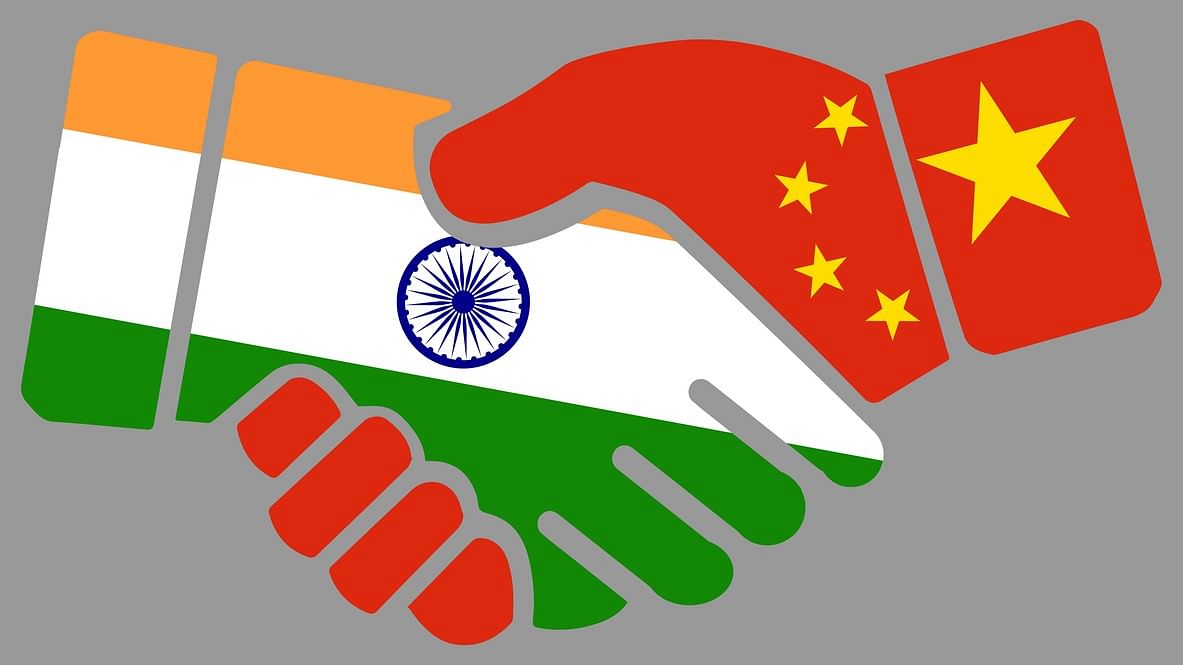
Representative image.
Credit: iStock Photo
New Delhi: After a meeting between the diplomats of the two nations to completely resolve the military stand-off along the Line of Actual Control in eastern Ladakh, Beijing on Tuesday claimed to have “further narrowed differences” with New Delhi while India described its latest round of talks with China as “frank, constructive and forward-looking”.
Beijing also agreed to strictly abide by its “border-related agreements” with New Delhi, which had repeatedly alleged over the past few years that the violation of the 1993 and 1996 pacts by the Chinese People’s Liberation Army had necessitated countermeasure by the Indian Army and had led to the stand-off along the LAC in eastern Ladakh.
The signs of progress in the long-stalled negotiation for the mutual withdrawal of troops from the remaining face-off points along the LAC came after the Indian and Chinese diplomats held the 31st meeting under the framework of the bilateral Working Mechanism on Consultation and Coordination (WMCC) in Beijing on Thursday – just about four weeks after the 30th in New Delhi on July 31. The military officials of the two nations also attended the meeting.
The two sides had a “frank, constructive and forward-looking exchange of views” on the situation along the LAC to narrow down the differences and find an early resolution of the outstanding issues, the Ministry of External Affairs of the government of India stated in New Delhi. They agreed to have more contacts through diplomatic and military channels.
“The two sides agreed to work together to resolve the border situation as soon as possible in accordance with the important consensus reached recently by the foreign ministers of the two countries,” the Ministry of Foreign Affairs of the government of China stated in Beijing.
“The two sides exchanged in-depth views on relevant issues in the border area, further narrowed differences, expanded consensus, and agreed to strengthen dialogue and consultation, accommodate each other's reasonable concerns, and reach a solution acceptable to both sides as soon as possible,” it said, adding: “The two sides agreed to consolidate the results of the consultations, strictly abide by the border-related agreements and confidence-building measures, and continue to jointly maintain peace and tranquility in the border area.”
External Affairs Minister S Jaishankar had two meetings with Chinese Foreign Minister Wang Yi in Astana and Vientiane last month.
The meeting of the Indian and Chinese diplomats was the 16th after the military stand-off started along the LAC in eastern Ladakh in April-May 2020.
Ever since Beijing attempted to change the status quo along the India-China LAC in eastern Ladakh by deploying a large number of troops of the Chinese PLA close to the de facto boundary between the two nations in April-May 2020, New Delhi has been accusing the neighbouring communist country of flouting the 1993 and 1996 bilateral agreements.
The agreements required both sides to refrain from amassing large numbers of troops in the border areas, to strictly abide by and respect the LAC, and to avoid taking any unilateral action to alter it.
The Indian Army too had to deploy additional troops to resist the Chinese PLA’s move to push the LAC westward. This resulted in a military stand-off, which reached a flashpoint with a violent clash at Galwan Valley on June 15, 2020, resulting in casualties on both sides.
Though protracted negotiations led to the mutual withdrawal of troops by both the Indian Army and the Chinese PLA from some of the face-off points along the LAC, like Galwan Valley, the northern and southern banks of Pangong Tso, Gogra Post, and Hot Springs, the stand-off could not be resolved completely so far.
The PLA troops deployed in Depsang, well inside the territory of India along the LAC with China, are continuing to block the Indian Army’s access to Patrolling Points 10, 11, 12, 12A, and 13. A face-off is also continuing in Demchok.
Beijing, however, over the past couple of years repeatedly claimed that the mutual withdrawal of troops by the Chinese PLA and the Indian Army from Patrolling Point 15 (Gogra-Hot Springs area) in September 2022 marked the restoration of normalcy along the LAC in eastern Ladakh. China’s claim appeared to be an attempt to subtly build up pressure on India to accept the “new normal” in the Depsang and Demchok areas. New Delhi, however, rejected the argument put forward by Beijing.
Gourangalal Das, Joint Secretary (East Asia) at the MEA, led New Delhi’s delegation for the meeting in Beijing on Thursday. The diplomats from Beijing were led by Hong Liang, Director General of the Boundary and Oceanic Department of the Ministry of Foreign Affairs of the Chinese Government.
They decided to jointly uphold peace and tranquility on the ground in border areas in accordance with relevant bilateral agreements, protocols, and understandings reached between the two governments as long as the stand-off would not be completely resolved. New once again conveyed to Beijing that restoration of peace and tranquility, and respect for the LAC were the essential basis for the restoration of normalcy in bilateral relations.
